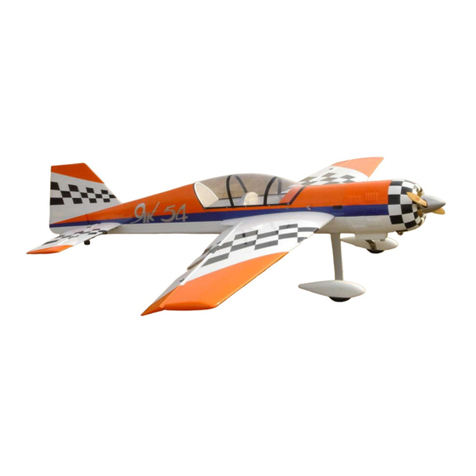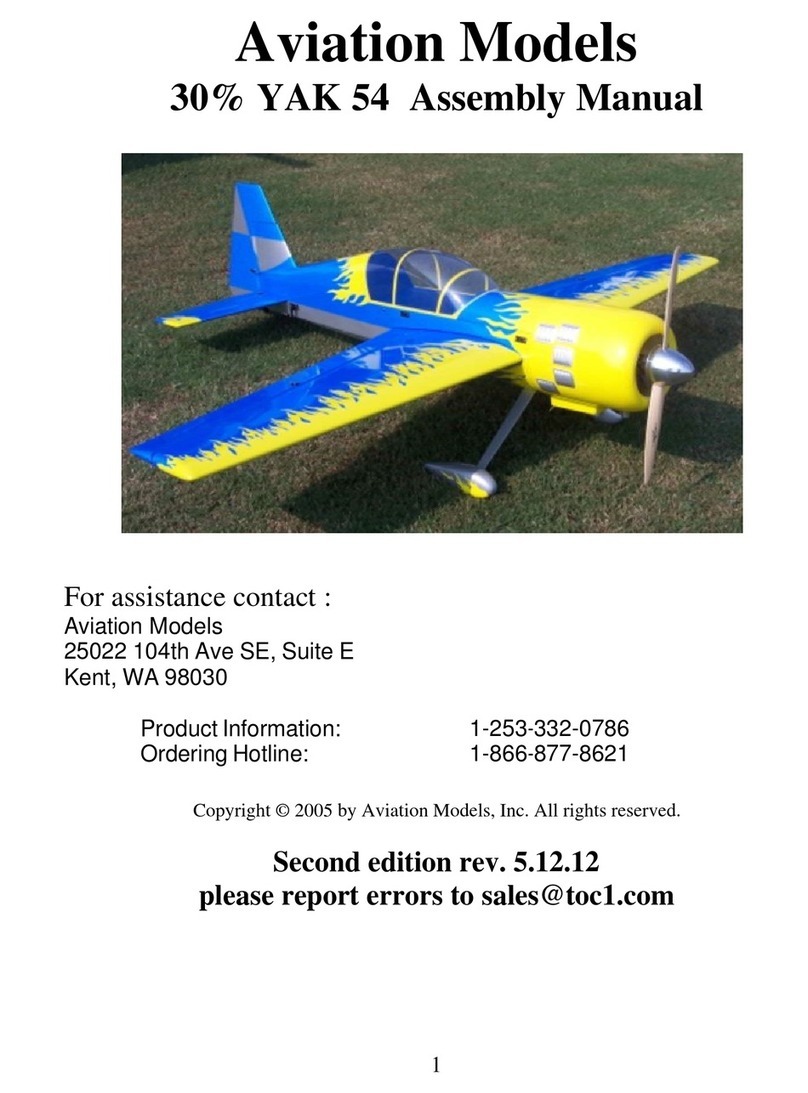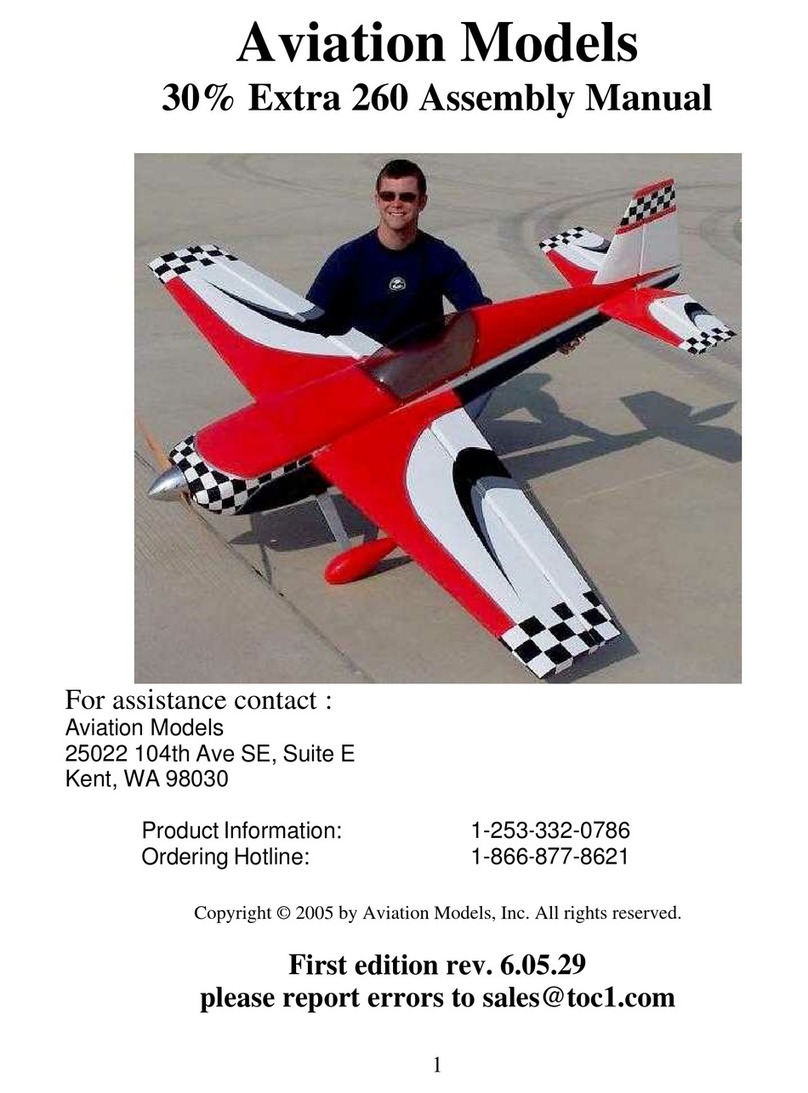
37.5% Yak 54 Assembly Manual
Step 1. Open and inspect everything
This section should be fairly self e
x
planatory.
In the large box you should have a fuselage with hatch., wing tube and dual stab
tub
es, the elevator/stab asse
m
blies, the rudder, cowl, wheel pants, canopy, and a
package with the landing gear, tail wheel bracket and mi
s
cellaneous nuts and bolts.
Use some acetone on a rag to clean the glue off the tubes. Under all of this is a
falsefloor
, and under that you will find the wings with aile
r
ons attached. The
hinges are installed in the elevators and ailerons, but they are not glued, you have
to do that. The hinges for the rudder are in the hardware pack. We have had good
luck with Pro
-
bond Ul
timate and Gorilla glue, both of which are glues that expand
as they dry cure and fill the voids in the hinges and their sockets.
Check everything for shipping damage and/or manufacturing defects. If there is a
problem, r
e
port it to us NOW
, not after you
start building the plane.
Read the quick start guide at the end of this manual first. It has hel
p
ful hints
and any errata corrections that may be available.
Before proceeding to any assembly, now is a good time to go over the whole plane
and fix any cosmetic flaws. Some cosmetic flaws are to be expected, this fact is r
e-
flected in the price.
Using This Manual
When you start a construction section, it is a good idea to first read that entire se
c-
tion before cu
t
ting or drilling or gluing. For example, if you are about to begin the
section called “Mount the Hatch and Canopy”, then read that entire section b
e
fore
doing anything else. Toward the end of that section, there is an option to paint
frame line on the inside of the canopy. If you’ve already glued it on, it will be im-
possible. Reading the entire section will give you a good feel of where you are
headed and any options available.






























